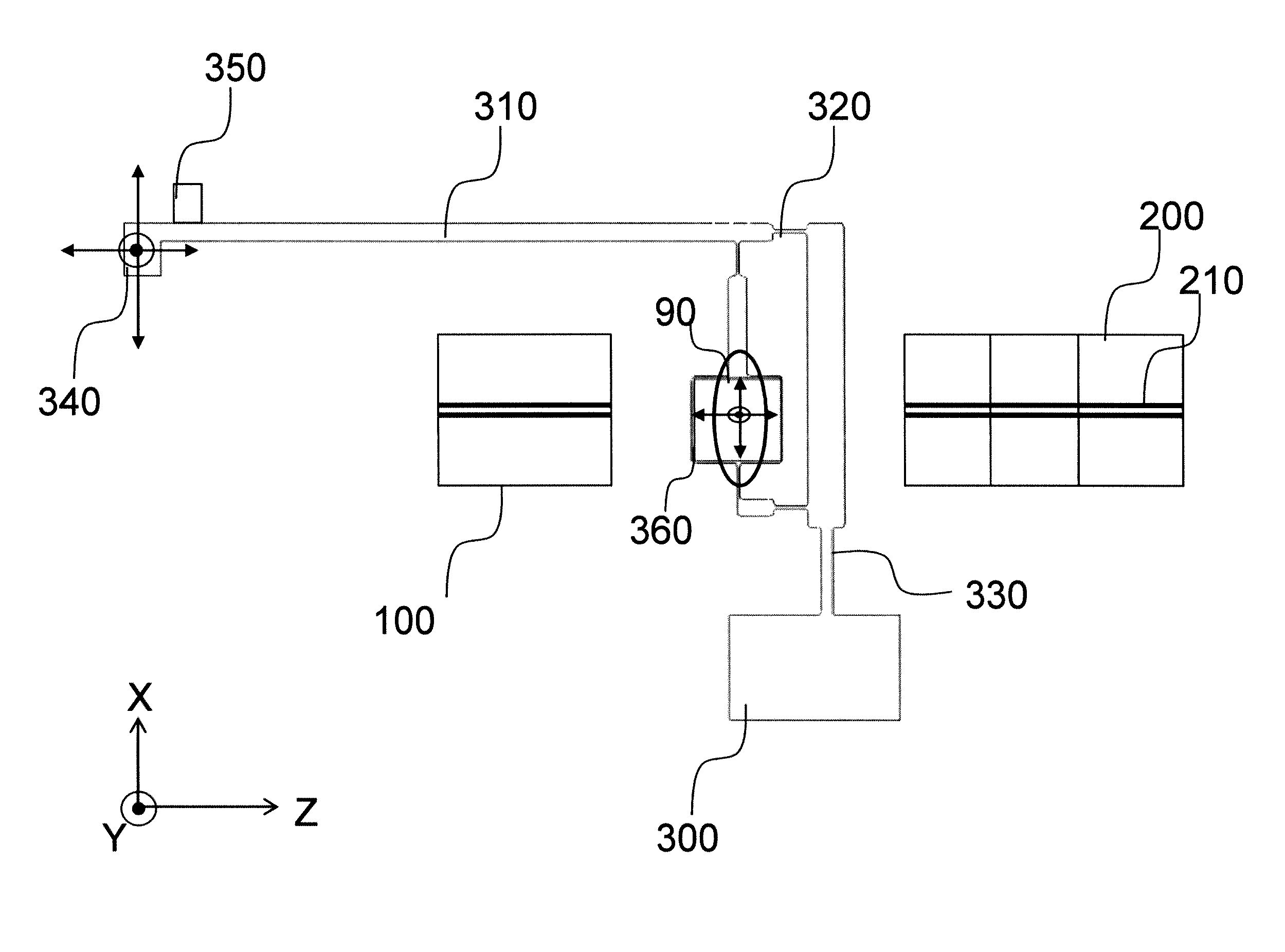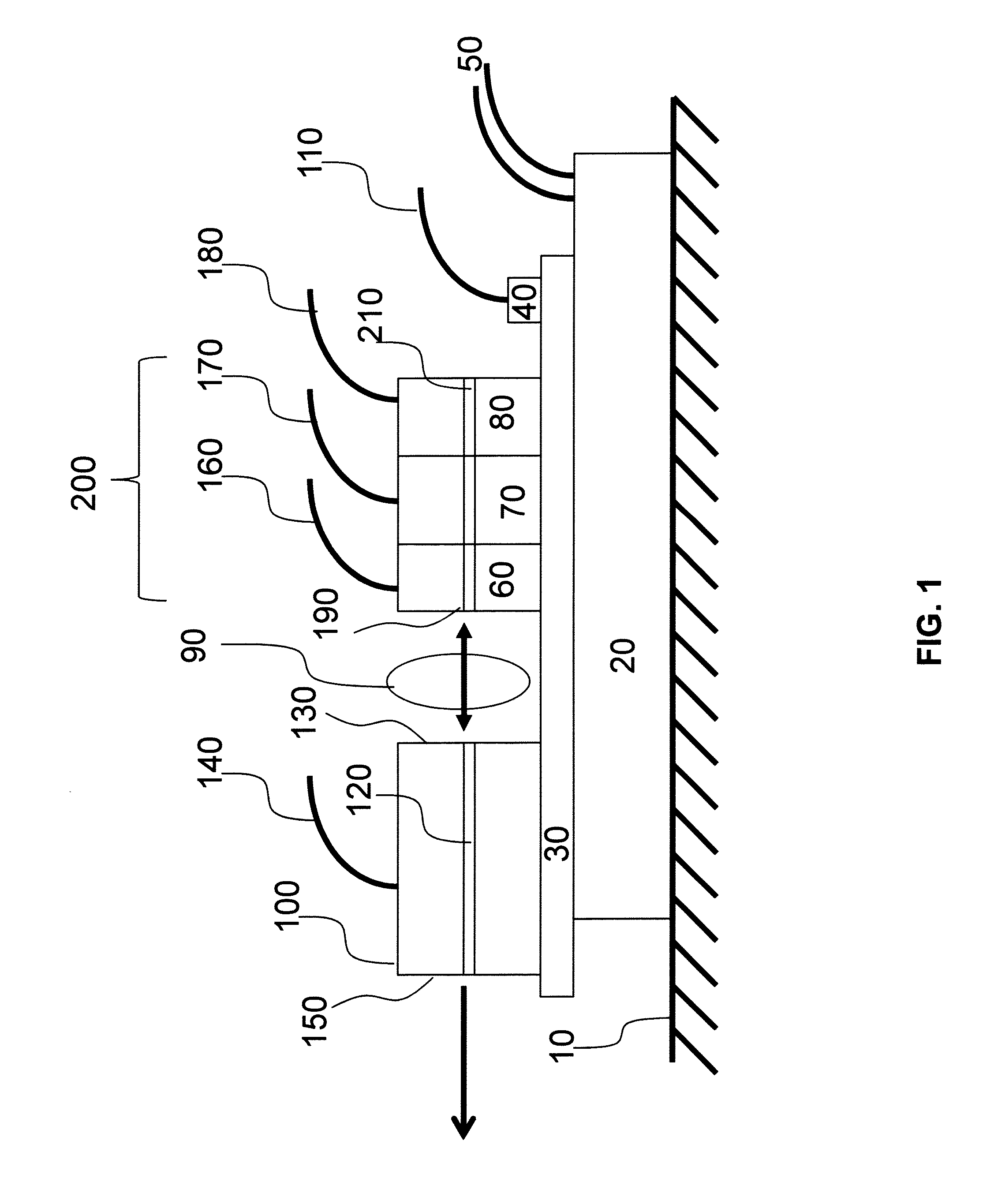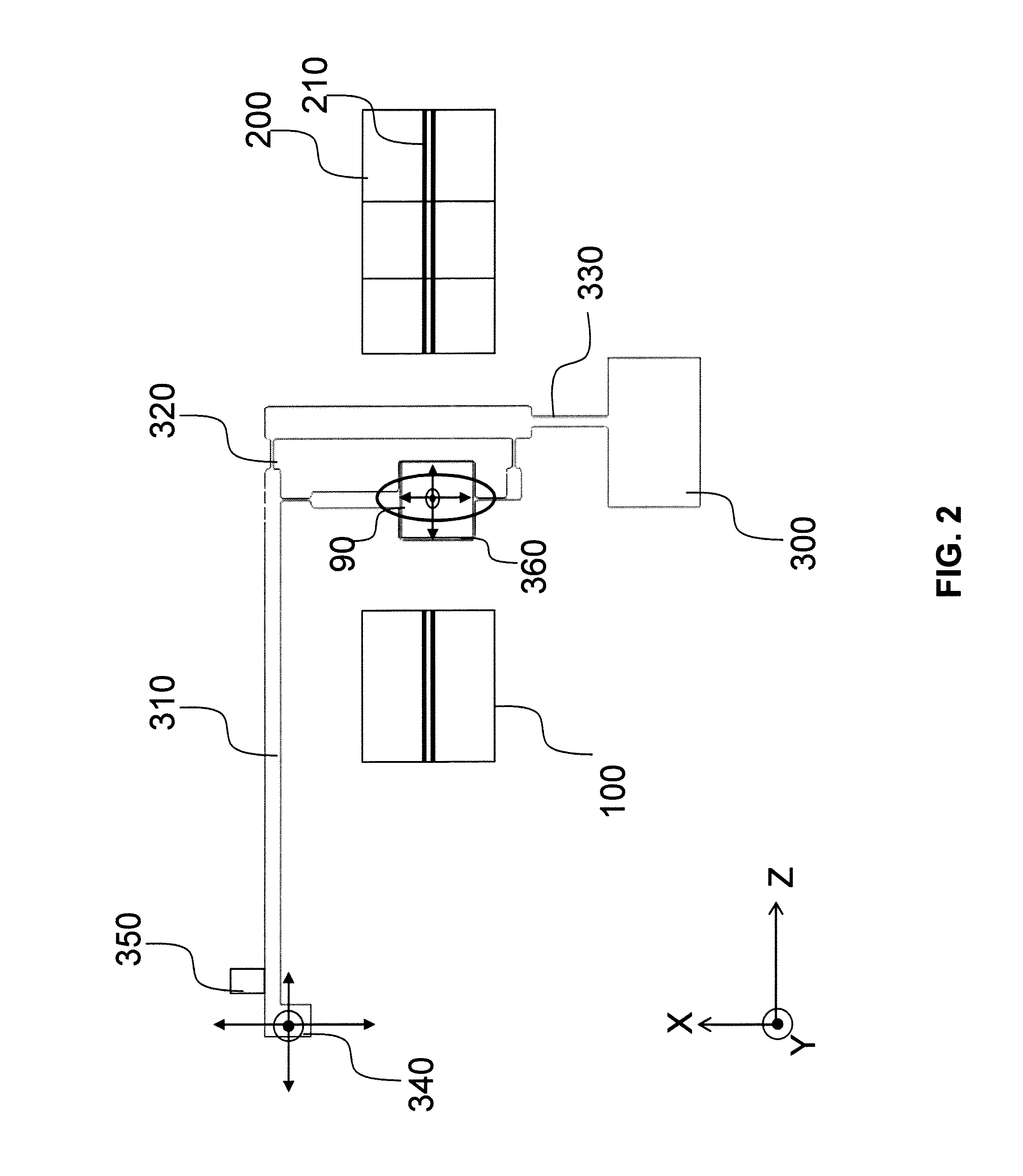External cavity widely tunable laser using a silicon resonator and micromechanically adjustable coupling
a silicon resonator and external cavity technology, applied in the direction of laser details, laser optical resonator construction, optical resonator shape and construction, etc., can solve the problems of low chip yield, large chip size, and low manufacturing cost, and achieve low cost, wide tunable
- Summary
- Abstract
- Description
- Claims
- Application Information
AI Technical Summary
Benefits of technology
Problems solved by technology
Method used
Image
Examples
Embodiment Construction
[0034]FIG. 1 schematically illustrates a simple embodiment of the invention. A heatsink 10 is connected thermally to the environment and provides cooling for a module. The module itself is temperature controlled using a thermoelectric cooler 20 which is connected to the heatsink 10. A thermistor 40 monitors the temperature of a carrier 30 coupled to the thermoelectric cooler. If the temperature becomes higher than the desired temperature, current is supplied through wires 50 to the thermoelectric cooler 20 such that heat is removed from the carrier 30. If the carrier 30 becomes too cool, the current to the thermoelectric cooler is either reduced or reversed in direction such that the temperature of the carrier 30 and the topical components mounted on the carrier are generally constant. The temperature reading of the thermistor is monitored by measuring its electrical resistance using wire 110.
[0035]An external cavity laser assembly is bonded to the temperature controlled carrier 30 ...
PUM
 Login to View More
Login to View More Abstract
Description
Claims
Application Information
 Login to View More
Login to View More - R&D
- Intellectual Property
- Life Sciences
- Materials
- Tech Scout
- Unparalleled Data Quality
- Higher Quality Content
- 60% Fewer Hallucinations
Browse by: Latest US Patents, China's latest patents, Technical Efficacy Thesaurus, Application Domain, Technology Topic, Popular Technical Reports.
© 2025 PatSnap. All rights reserved.Legal|Privacy policy|Modern Slavery Act Transparency Statement|Sitemap|About US| Contact US: help@patsnap.com



